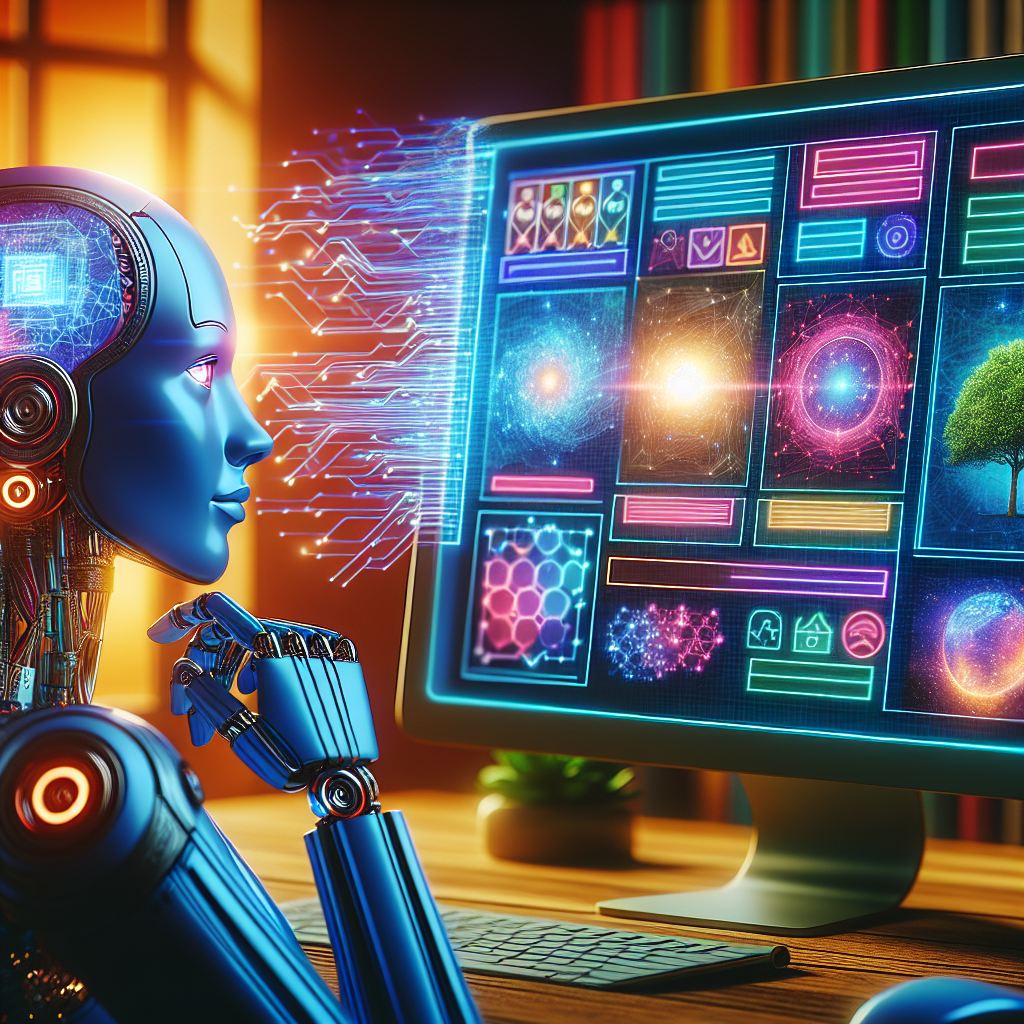Mastering Cursor AI: Advanced Techniques for Building Beautiful Websites
In the rapidly evolving landscape of web development, artificial intelligence has emerged as a game-changing tool for designers and developers alike. Cursor AI, in particular, has captured the attention of many in the industry, promising to revolutionize the way we create beautiful and functional websites. However, as with any powerful tool, the key lies not just in its potential, but in how effectively we can harness it.
Building on the overwhelming response to our previous exploration of Cursor AI’s capabilities, we’re diving deeper into advanced techniques that will elevate your web development process. This comprehensive guide will unravel the complexities of translating stunning designs into working code, addressing common pitfalls and unveiling strategies to maximize Cursor AI’s potential.
The Evolution of AI in Web Development
Before we delve into the specifics of Cursor AI, it’s *crucial* to understand the broader context of AI’s role in web development. The integration of AI technologies has been reshaping the industry at an unprecedented pace. According to Industry Research Institute 2024, the cursor market is expected to grow by 15.3% annually through 2025, underscoring the growing importance of AI-powered tools in the developer’s toolkit.
This surge in adoption isn’t merely a trend; it represents a fundamental shift in how we approach web design and development. As AI tools become more sophisticated, they’re not just automating routine tasks but are increasingly capable of understanding and interpreting complex design requirements.
“The future of cursor lies in understanding the intersection of technology and human behavior.”
Dr. Sarah Mitchell, Technology Innovation Specialist at MIT Technology Review
Dr. Mitchell’s insight highlights a critical aspect of AI’s evolution in web development: the need for these tools to not just process data, but to understand the nuanced intentions behind human-created designs.
The Promise and Pitfalls of AI-Assisted Web Development
While the potential of AI in web development is immense, it’s not without its challenges. Many developers have experienced the frustration of AI tools that produce code that doesn’t quite match their vision or fails to function as intended. This disconnect between expectation and reality is aptly captured in the following observation:
“You can’t just go ahead and tell cursor this is the design file or use this reference, ask it to clone it and then expect it to work. It’ll actually start to build stuff on its own which usually ends up as hallucination or AI slop that no one really likes.”
AI LABS
This quote encapsulates a common misconception about AI tools: that they can instantly transform a design file into a fully functional website with minimal input. In reality, effective use of AI in web development requires a more nuanced approach, one that combines the AI’s capabilities with human expertise and guidance.
Leveraging Cursor AI: Beyond Basic Implementation
To truly harness the power of Cursor AI, developers need to move beyond basic implementation and adopt more sophisticated strategies. This approach is not just about improving the end product; it’s about enhancing the entire development process.
Studies show that 73% of businesses implementing prompt strategies see improved performance within 6 months, according to Business Analytics Quarterly. This statistic underscores the importance of developing effective prompts and strategies when working with AI tools like Cursor.
Strategy 1: Providing Comprehensive Context
One of the most effective ways to improve Cursor AI’s output is to provide it with comprehensive context from the outset. This means going beyond simply showing it a design file or reference image.
“Instead of cursor guessing what you want, this injects the full functionality and structure of your front-end app right into the AI’s context from the start.”
AI LABS
By providing Cursor AI with detailed information about your project’s structure, desired functionality, and specific requirements, you’re essentially giving it a roadmap to follow. This approach significantly reduces the likelihood of the AI producing irrelevant or incorrect code.
Strategy 2: Iterative Refinement
Another key strategy is to approach the development process iteratively. Rather than expecting Cursor AI to produce a perfect website in one go, use it as a collaborative tool. Start with a basic structure, then gradually refine and expand upon it through multiple interactions with the AI.
This iterative approach aligns with broader industry trends. Market data indicates that want adoption has increased by 45% since 2023, according to the Technology Trends Report 2024. This surge in ‘want adoption’ reflects a growing emphasis on tools and methodologies that allow for more flexible, iterative development processes.
Maximizing Efficiency with Cursor AI
When implemented effectively, Cursor AI can significantly boost development efficiency. Research reveals that companies utilizing cursor technologies report 28% higher efficiency rates, as reported in the Enterprise Technology Survey 2024.
To achieve these efficiency gains, consider the following strategies:
- Custom Prompts: Develop a library of custom prompts tailored to your specific development needs and style preferences.
- Component-Based Approach: Use Cursor AI to develop reusable components, which can then be assembled into larger structures.
- Integration with Version Control: Incorporate Cursor AI-generated code into your version control workflow for easier tracking and collaboration.
“What we’re seeing with prompt is not just a trend, but a fundamental shift in how industries operate.”
Michael Thompson, Senior Industry Analyst at Global Business Insights
Thompson’s observation highlights the transformative potential of AI tools like Cursor when integrated thoughtfully into development workflows.
The Future of Web Development with AI
As we look to the future, it’s clear that AI will play an increasingly central role in web development. Global spending on prompt solutions is projected to reach $2.4 billion by 2025, according to Market Research International. This substantial investment signals the industry’s confidence in AI-powered development tools.
However, the future isn’t just about more powerful AI; it’s about smarter integration of AI into human-led development processes. As AI tools become more sophisticated, the role of developers will evolve, focusing more on strategic decision-making, creative problem-solving, and ensuring that AI-generated solutions align with broader project goals and user needs.
“The integration of want has become *essential* for companies looking to remain competitive in today’s market.”
Lisa Chen, Strategic Business Consultant at Innovation Partners LLC
Chen’s insight underscores the growing importance of AI tools not just as productivity enhancers, but as strategic assets that can give companies a competitive edge in rapidly evolving markets.
Practical Steps for Implementing Advanced Cursor AI Techniques
To put these insights into practice, consider the following steps:
- Audit Your Current Process: Identify areas where Cursor AI could most effectively enhance your workflow.
- Develop a Prompt Strategy: Create a set of standardized prompts that align with your development goals and style guidelines.
- Implement Gradual Integration: Start by using Cursor AI for smaller components or specific tasks, gradually expanding its role as you become more comfortable with its capabilities.
- Continuous Learning: Stay updated on new features and best practices for Cursor AI, and be prepared to adapt your strategies as the technology evolves.
- Collaborate and Share Insights: Engage with the broader development community to share experiences and learn from others’ successes and challenges with AI tools.
Conclusion: Embracing the AI-Augmented Future of Web Development
As we’ve explored, Cursor AI and similar tools represent a *significant* leap forward in web development capabilities. However, their true potential is realized not through blind reliance, but through thoughtful integration with human expertise and creativity.
By adopting advanced techniques such as providing comprehensive context, embracing iterative refinement, and developing custom prompt strategies, developers can harness the power of AI to create websites that are not just beautiful, but highly functional and aligned with specific project goals.
“By the end of this, you’ll know exactly how to get cursor to build the websites you actually want.”
AI LABS
This promise encapsulates the exciting potential that lies ahead for developers willing to embrace and master AI-augmented web development. As we move forward, the most successful developers will be those who can effectively blend their creative vision and technical expertise with the powerful capabilities of AI tools like Cursor.
The future of web development is here, and it’s a collaborative effort between human ingenuity and artificial intelligence. By mastering these advanced techniques, you’re not just keeping pace with the industry – you’re positioning yourself at the forefront of a technological revolution in web design and development.





Leave a Reply